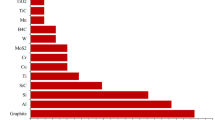Abstract
Clean machining is gaining ground as one of the crucial issues in future manufacturing. Many machining industries are looking for alternative solutions to wet machining because of the costs of the latter, including environmental costs, as well as its impact on occupational health and safety. Dry machining is being proposed, but in most conditions, the cutting tool wears out quicker, leading to part quality deterioration and increased machining costs. Minimum quantity lubrication (MQL) machining is also proposed to maintain a reasonable tool life and limited cost, as compared to the situation with flood or wet machining. Both the MQL and dry machining methods, however, are susceptible to the generation of aerosols containing metallic particles that can be detrimental to occupational health and safety. Minimizing particle emissions is of prime importance since these can have serious consequences on the operator’s health. They have been seen to be at a minimum at two specific cutting ranges. In this study, investigations are done to examine the effect of lubrication (dry and MQL) during the turning of the 7075-T6 aluminum alloy. The performance indexes studied are the surface roughness, the chip thickness, and aerosol generation.
Similar content being viewed by others
References
Gaitonde VN, Karnik SR, Davim JP (2008) Selection of optimal MQL and cutting conditions for enhancing machinability in turning of brass. J Mater Process Technol 204:459–464
Kamata Y, Obikawa T (2007) High speed MQL finish-turning of Inconel 718 with different coated tools. J Mater Process Technol 192–193:281–286
Kelly JF, Correrell MG (2002) Minimal lubrication machining of aluminum alloys. J Mater Process Technol 120:327–334
Attanasio A, Gelfi M, Giardini C, Remino C (2006) Minimal quantity lubrication in turning: effect on tool wear. Wear 260:333–338
Min S, Inasaki I, Fujimura S, Wakabayaski T, Suda S (2005) Investigation of adsorption behaviour of lubricants in near-dry machining. Proc Inst Mech Eng B J Eng Manuf 219(9):665–671
Itoigawa F, Childs THC, Nakamura T, Belluco W (2006) Effects and mechanisms in minimal quantity lubrication machining of an aluminum alloy. Wear 260:339–344
Damir A, Lancereau S, Attia H, Hendrick P (2010) On the performance of minimum quantity lubrication in milling Al 6061. Proceedings of 2nd International CIRP Conference on Process Machine, Vancouver, B.C., Canada, 10–11 June 2010
Vikram Kumar CHR, Ramamoorthy B (2007) Performance of coated tools during hard turning under minimum fluid application. J Mater Process Technol 185:210–216
Varadarajan AS, Philip PK, Ramamoorthy B (2002) Investigations on hard turning with minimal cutting fluid application (HTMF) and its comparison with dry and wet turning. Int J Mach Tools Manuf 42:193–200
Ozawa M, Hosokawa A, Tanaka R, Furumoto T, Ueda T (2008) Minimum quantity lubrication turning using tools with oil holes, Kanazawa, Ishakawa, Japan. ASPE Proceedings, October 19 - October 24, Portland, Oregon
Dhar NR, Islam MW, Islam S, Mithu MAH (2006) The influence of minimum quantity lubrication (MQL) on cutting temperature, chip and dimensional accuracy in turning AISI-1040 steel. J Mater Process Technol 171:93–99
Yoshimura H, Moriwaki T, Ohmae N, Nakai T, Shibasaka T, Kinoshita H, Matsui M, Shimizu M (2006) Study on near dry machining of aluminum alloys. JSME Int J Ser C Mech Syst Mach Elem Manuf 49(1):83–89
Sutherland JW, Kulur VN, King NC (2000) Experimental investigation of air quality in wet and dry turning. CIRP Ann Manuf Technol 49(1):61–64
Balout B, Songmene V, Masounave J (2002) Usinabilité des Alliages de Magnésium et d'Aluminum Partie I: forces de coupe. In Proc. of the international symposium on enabling technologies for light metal and composite materials and their end-products, 41th conf. of metallurgists of CIM: 223-242
Songmene V, Balout B, Masounave J (2008) Clean machining: experimental investigation on dust formation part II: influence of machining strategies and drill condition. Int J Environ Conscious Des Manuf 14:17–33
Boothroyd G, Winston AK (2006) Fundamentals of machining and machine tools, 3rd edn. CRC Press, Taylor and Francis, New York, USA
Gómez-Parra A, Álvarez-Alcón M, Salguero J, Batista M, Marcos M (2013) Analysis of the evolution of the Built-Up Edge and Built-Up Layer formation mechanisms in the dry turning of aeronautical aluminum alloys. Wear 302(1–2):1209–1218
Kouam J, Songmene V, Zedan Y, Djebara A, Khettabi R (2013) On chip formation during drilling of cast aluminum alloys. J Mach Sci Technol 17:228–245
Songmene V, Khettabi R, Zaghbani I, Kouam J, Djebara A (2011) Machining and machinability of aluminum alloys, aluminum alloys, theory and applications. In: Kvackaj T (ed) ISBN: 978-953-307-244-9, InTech, India, pp 377–400
Khan MMA, Mithu MAH, Dhar NR (2009) Effects of minimum quantity lubrication on turning AISI 9310 alloy steel using vegetable oil-based cutting fluid. J Mater Process Technol 209:5573–5583
Becze CE, Elbestawi MA (2002) A chip formation based analytic force model for oblique cutting. Int J Mach Tools Manuf 42:529–538
Khettabi R, Songmene V, Masounave J (2010) Effects of speeds, materials and tool rake angles on metallic particle emission during orthogonal cutting. J Mater Eng Perform 16(6):767–775
Kouam J, Songmene V, Djebara A, Khettabi R (2012) Effect of friction testing of metals on particle emission. J Mater Eng Perform 21(6):965–972
Kouam J, Djebara A, Songmene V (2014) Experimental investigation on the effect of pre-holes on drilling process performance of aluminum alloys: forces, surface finish and dust emission. J Adv Mater Sci Appl 3(1):13–23
Balout B, Songmene V, Masounave J (2007) An experimental study of dust generation during dry drilling of pre-cooled and pre-heated workpiece material. J Manuf Process 9(1):23–34
Author information
Authors and Affiliations
Corresponding author
Rights and permissions
About this article
Cite this article
Kouam, J., Songmene, V., Balazinski, M. et al. Effects of minimum quantity lubricating (MQL) conditions on machining of 7075-T6 aluminum alloy. Int J Adv Manuf Technol 79, 1325–1334 (2015). https://doi.org/10.1007/s00170-015-6940-6
Received:
Accepted:
Published:
Issue Date:
DOI: https://doi.org/10.1007/s00170-015-6940-6




